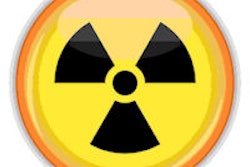The scientific theory that links low levels of radiation to cancer incidence is deeply flawed and cannot be used as a model to predict excess cancer incidence, researchers argue in a paper published in Technology in Cancer Research and Treatment.
The article challenges the linear no-threshold (LNT) theory, which holds that there is no threshold of radiation exposure below which radiation is safe to humans, and that the cancer risk of radiation rises in a linear fashion with the level of radiation exposure. The LNT model has formed the basis for most of the efforts to regulate and reduce radiation exposure.
Despite the widespread media coverage of studies purporting to show that radiation from x-ray, CT, and other medical imaging technologies causes cancer, "no data have ever unequivocally demonstrated the induction of cancer following exposure to low doses and dose rates," Jeffry Siegel, PhD, from Nuclear Physics Enterprises and Dr. James Welsh from Loyola University Chicago argue in the paper.
Siegel and colleagues reexamined the original studies dating back to the 1940s, which led to adoption of the LNT model. They found that the data reported in those studies do not actually support the LNT model.
Studies that purport to show such a link have enormous flaws, including their universal reliance on an unproven statistical model, they wrote. In particular, these studies achieve their goal by citing the LNT model, in which the well-established cancerous effects of high radiation doses are extrapolated down to encompass low doses and low dose rates.
But although LNT is commonly used, it "is of questionable validity, utility, and applicability for estimation of cancer risks," Siegel and Welsh wrote. Contrary to the LNT model's predictions, there is compelling evidence that the human body has evolved an ability to repair damage from low-dose radiation exposure (Technol Cancer Res Treat, March 30, 2015).
The authors cite the mutation rate caused by low-dose background radiation in the environment as an example. The mutation rate is actually 2.5 million times lower than the rate of spontaneous mutations in the body, they reported. So even if the LNT model were valid, the small increase in genetic mutations caused by low-dose radiation from medical imaging would hardly overwhelm the body's defenses.
Siegel and Welsh also cited two recent studies that showed a possible increased risk of cancer from low-dose radiation in pediatric CT scans, noting that the cancers are likely due to the underlying medical conditions that prompted the scans, rather than the radiation exposure.
Many people are focused on the dangers of radiation from medical imaging, but the risks associated with not undergoing a procedure or exploratory surgery are far higher -- and generally ignored in the media, they wrote.



















